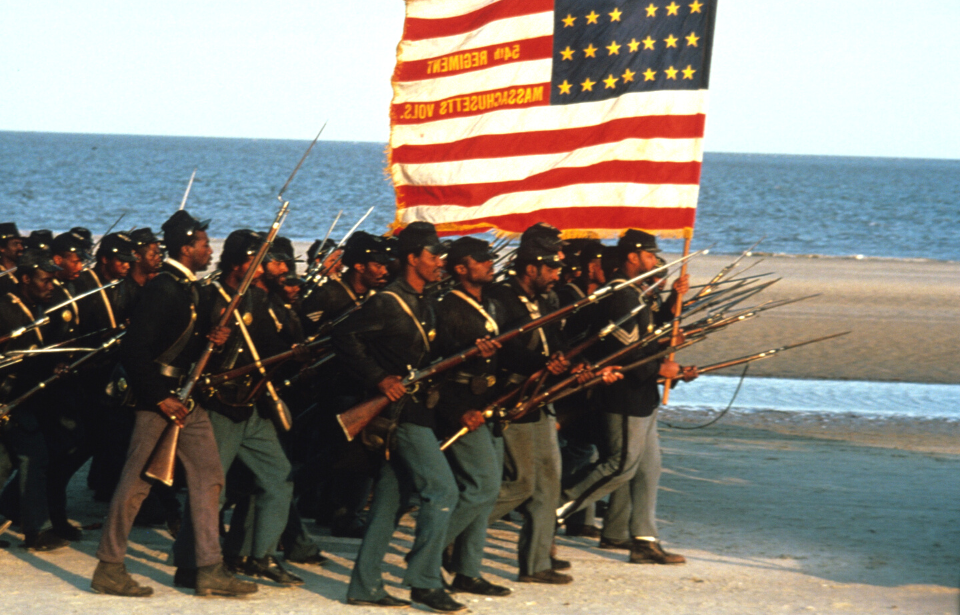Fort Wagner was a Confederate stronghold during the American Civil War that became crucial to acquire for the Union. This was because the location’s situated on Morris Island and it protected the Charleston Harbor. Headed by the first official all-African-American infantry regiment, the Second Battle of Fort Wagner was an attempt by Union forces to push out the Confederates. It saw bloodshed, hand-to-hand combat and, ultimately, the withdrawal and defeat of the Union.
54th Massachusetts Infantry Regiment
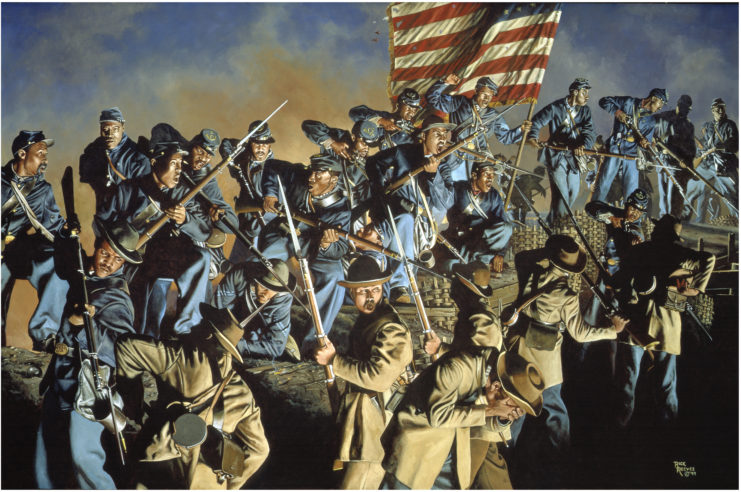
The 54th Massachusetts Infantry Regiment was an entirely African-American infantry regiment of the Union Army during the Civil War. It was the second of its kind, after the 1st Kansas Colored Volunteer Infantry Regiment, and comprised of over 1,000 Black men. The regiment was commanded by 37 White officers, with the one in charge being 25-year-old Col. Robert Gould Shaw.
The 54th became the first officially recognized African-American Union military regiment of the conflict, officially sanctioned by the Lincoln Administration’s War Department. They saw their first real combat at the Second Battle of Fort Wagner, participating in only one slight altercation prior to it.
The Second Battle of Fort Wagner was their chance to prove themselves.
Fort Wagner
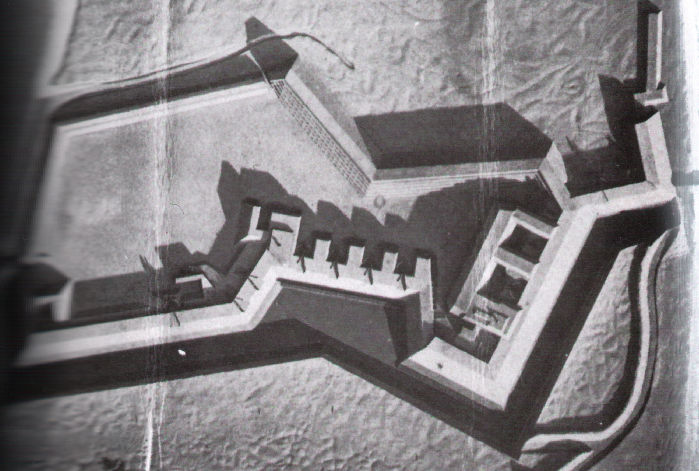
An initial attack was made on Fort Wagner on July 10, 1863, led by Brig. Gen. Quincy Gillmore.
The structure of the fortress, with its walls made of sand and earth, was a daunting 30 feet tall and difficult to penetrate. This, along with the deep and wide moat that surrounded it, made reaching the walls seem like a distant dream. Lining the moat were land mines and pointed stakes, and all of this had to be overcome while approximately 1,800 Confederate soldiers laid fire against the approaching Union soldiers.
Unable to capture the fort itself during the first two days, Gillmore and his troops temporarily settled for their acquisition of the southern part of Morris Island, where they retreated. They’d achieved this ground with the assistance of naval bombardments, and used their position to regroup and plan for a second assault.
The next attack was planned for July 18, and would be carried out by the 54th Massachusetts Infantry Regiment.
Second Battle of Fort Wagner
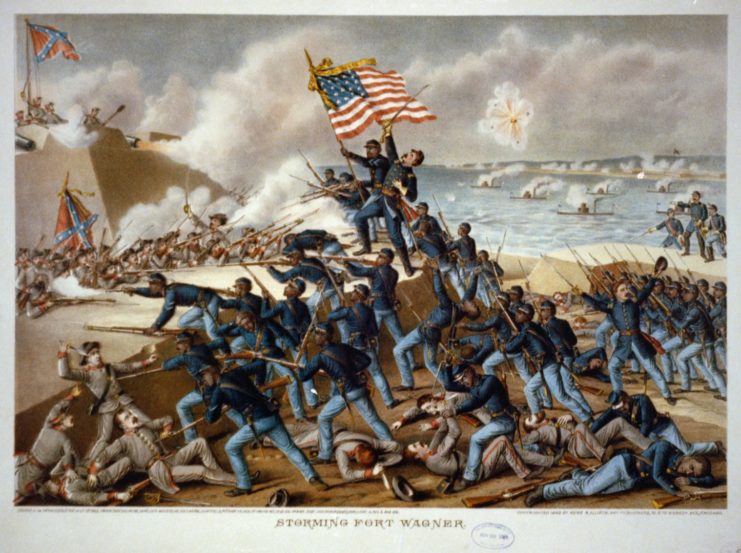
Before the assault began, Col. Gillmore ordered Union artillerymen to commence fire on Fort Wagner from their ships, anchored 300 yards away. The Second Battle of Fort Wagner began at sunset, with the 54th Massachusetts Infantry Regiment deployed for a frontal assault that moved up the west side. The nine regiment supporting units, divided into two brigades, attacked from the south.
The Confederates were led by Brig. Gen. William B. Taliaferro and heavily outnumbered, with approximately 5,000 Union fighters attacking their position. However, it was their position within Fort Wagner that gave them the proper defenses.
When the 54th were approximately 150 yards from the fort, the Confederate defenders attacked with cannon and small arms fire, causing a large portion of the Union troops to fall. Despite this, they continued to press forward. With support fire coming from the other brigades, the 54th pushed further toward Fort Wagner and reached the parapet.
Col. Shaw himself led the men past the moat and up onto the parapet.
Col. Robert Gould Shaw is slain
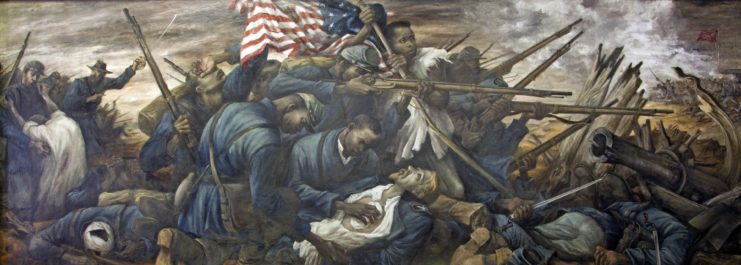
Early into the Second Battle of Fort Wagner, when Col. Shaw reached the parapet, he stood up and yelled to his men, “Forward Fifty-Fourth, forward!” What was meant to be an inspiring moment for the 54th Massachusetts Infantry Regiment quickly turned into tragedy, as it was right at that moment that Shaw was killed by Confederate gunfire. Shortly after, the 54th became engaged in hand-to-hand combat, unsuccessfully brawling with the Confederates atop the parapet. They were eventually forced back.
From the beach, the supporting Union forces weren’t having much luck themselves. They, too, were defeated trying to support the 54th and forced to withdraw.
The assault on Fort Wagner cost the 54th dearly. Shaw and 20 others were killed, with another 125 wounded and 102 declared missing in action (MIA). In total, some 1,515 Union soldiers were lost, captured or wounded in the effort to take the fort. The battle took approximately eight hours, and, after a valiant effort, the Union forces had been unable to capture it.
One man, Sgt. William Carney, managed to recover the US flag after the flag bearer was shot during the frontal assault. He successfully brought it back to Union lines, never letting it touch the ground. For his bravery, he became the first African-American awarded the Medal of Honor.
The Confederates eventually abandoned Fort Wagner
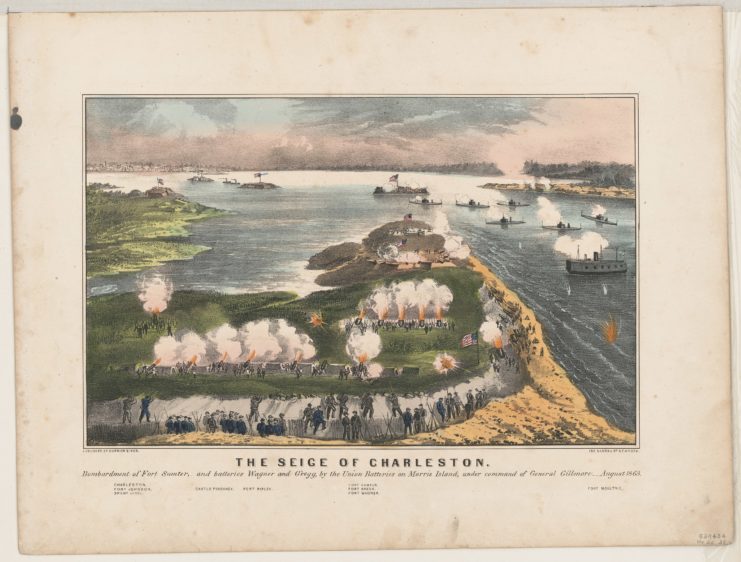
The Confederates were unable to hold Fort Wagner for the remainder of the Civil War. Following the Second Battle of Fort Wagner, the Union forces continued to rain down on their position with an over 60-day barrage of shelling. Eventually, the Confederates gave up the fort. The state of the structure had become indefensible, and they were forced to abandon it on September 7, 1863.
More from us: The Short Career of the Civil War-Era Double-Barreled Cannon
The 54th Massachusetts Infantry Regiment and the Second Battle of Fort Wagner were depicted in the 1989 Hollywood film, Glory, starring Morgan Freeman, Denzel Washington and Matthew Broderick.
